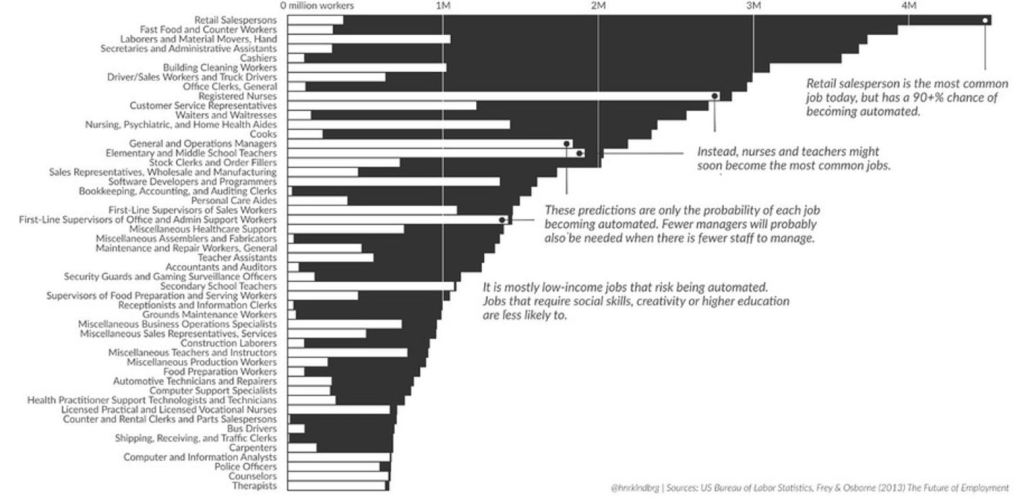In most industries, including construction, the answer is “Not long.” Elizabeth Kolbert’s “Our Automated Future,” (New Yorker, 12/16) is one account that gives a cogent analysis of how automation poses a far bigger threat to the future of jobs than outsourcing ever has. And it’s happening now, not in some sci-fi future.
In new construction, we see it happening more and more, with varying types of site modularization that makes the process of building less of a craft and more of an assembly line. Ready-Frame is one of the most recent examples. In Matt Risinger’s review “Ready-Frame Reinvents the Framing Package” (JLC, 2/17), the description of the framing site getting eerily quiet when a house is being framed with Ready-Frame—devoid of saws running and only the sound of nail guns popping off— provides one of the the most spine-chilling commentaries on how skilled labor is getting passed up by digital innovations.
In this MarketWatch report, Sue Chang gives us a chart recently developed using data from the University of Oxford that illustrates how our society is increasingly relying on robots. Robots will reportedly take over half of today’s jobs in 10 to 20 years. “As computers get better at, for example, perception (think self-driving car), service jobs relying on drivers are likely next up to be replaced by machines,” said Jeff Desjardins, an editor of Visual Capitalist, the company that developed the chart.
Of course, machines are unlikely to replace people en masse, the article explains. And many jobs are unlikely to disappear, particularly “those that require compassion, understanding and moral judgment, such as nurses, teachers and police officers.” We’d have to add to this list remodelers, home performance contractors, and anyone negotiating with building inspectors and zoning boards.
